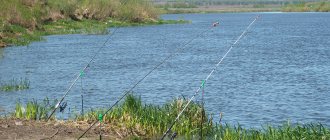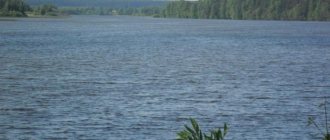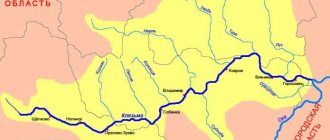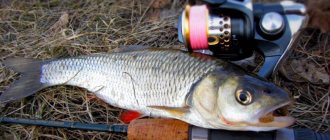Geography of the Stavropol Territory
The area of Stavropol is 66.16 km², it includes 26 administrative districts with a population of 2.8 million people, of which 58.36% are urban (data as of 01/01/2017).
The climate of the region is temperate continental. The terrain is difficult. The central part is occupied by the Stavropol Upland, which in the south connects with the foothills of the Greater Caucasus, in the east it smoothly flows into the Terek-Kuma Lowland and into the Azov-Kuban Lowland in the west, and in the north it connects with the Kuma-Manych depression.
In the foothills, one can distinguish Pyatigorye, a volcanic region with numerous peaks. The maximum height is observed in the Kislovodsk region and reaches 1603 meters above sea level. The smallest peak is located in the lower reaches of the Kuma River. Its height is only 6 meters.
The rivers, lakes and mountains of the Stavropol Territory are original and picturesque. There are 130 mineral water springs in the Stavropol region. The water resources of the region are not only rivers and lakes created by nature, but also man-made reservoirs, ponds and canals, which are used to moisten arid steppe lands.
Rivers of Stavropol
The rivers of the Stavropol Territory belong to the basins of the Caspian and Azov seas. Due to the arid climate in most of the region's lands, the density of the river network is insignificant and unevenly distributed. The rivers are most densely located in the foothills, and to the east and north their number decreases significantly. What rivers are there in the Stavropol Territory?
There are just over 200 rivers and rivulets in the Stavropol Territory. Most of them are small rivers. The length of such rivers is from 101 to 200 km with a drainage area from 1000 to 2000 km². The rivers flowing in the eastern part of the region contain a large amount of mineral elements, which is associated with the salinity of the local soils.
The list of rivers of the Stavropol Territory can be divided into two parts: rivers belonging to the Azov-Black Sea basin, and those belonging to the Caspian Sea basin.
The best free reservoirs
Big Stavropol Canal
At one time, the canal was built not for fish farming, but to provide agriculture with water, or rather irrigation. Well, where there is water, there is fish. Nowadays, the canal is becoming increasingly popular among fishermen. The canal is home to a wide variety of fish, both peaceful and predatory, which attracts fishing enthusiasts.
You can really catch it here:
- Soma.
- Perch.
- Podleschika.
- Pike.
- Pike perch.
Getting to the canal, which originates in the Circassian reservoir, is not at all difficult. The canal passes through Kursavka, after which it divides into two branches, eastern and western. The eastern component is sent to Budennovsk, and the western component is sent to Nevinnomyssk. Free fishing is allowed here at any time of the year, except for the spawning season.
Kochubeevsky district
This area has unique fishing conditions. Places with moderate currents are considered the most promising. Places in the water area where the current is minimal attract fish such as trout. Here it is not a problem to catch crucian carp, rudd or white bream.
Some, especially avid fishermen, have come across bream weighing up to 4 kilograms. Despite the fact that fishing here is free, you are still allowed to catch fish only with one hook and exclusively from the shore. At the same time, there is a catch norm - no more than 5 kilograms per person. You will also have to pay a fine if you are fishing from a boat.
Pravoegorlyksky Canal
This channel is distinguished by fairly clear and clean water, which cannot but interest fishing enthusiasts. The most numerous fish in this reservoir are considered to be pike perch and ram. Pike perch will have to be caught at a depth of 10 to 15 meters. In good, sunny weather, it is possible to catch large pike perch. This is especially promising in the dark. Rams here are caught using corn or wheat, and flour and aromatic substances are added to the bait. The ram bites quickly and aggressively. This reservoir is not suitable for those who are focused on a greater availability of fish species. In the Stavropol Territory, it is possible to find reservoirs where a larger number of fish species are found.
abundant right-gorlyk channel part 1
Yegorlykskoye Reservoir
This fishing spot is located in the Shpakovsky district. The reservoir is characterized by the presence of clean, running water. The water in this reservoir is changed up to 15 times a year. The most active species in this reservoir are silver carp, ram, pike perch and grass carp.
Fishing here is allowed throughout the year and is free. Fishing conditions allow the use of a watercraft, but you can also fish from the shore. Here you can find large perches and pike-perch, which are caught from a depth of 12 meters or more. As a rule, predatory fish are caught using artificial baits such as wobblers and twisters, as well as other, especially edible rubber.
Test fishing in the Stavropol Territory
Western Manych
The left tributary of the Don is the Western Manych. Translated from Turkic, “manych” means “bitter”. Its source is located at the site of the former branching of the river into Western and Eastern Manych, the Kalaus River.
The length of Western Manych is 219 km. The flow of this river passes through the valley of the Manych hollow. It feeds mainly from melting snow cover. The main tributaries are the Kalaus and Yegorlyk. Western Manych is most often used for fishing.
Fishing on the Yegorlyk Reservoir
Commercial fishing is not developed here, but it is a haven for amateurs. Judging by the reviews, it is rare that a fisherman leaves here without trophies. The most common types of fish are bream, pike perch, catfish, grass carp, and perch. In recent years, ram catches have increased. Every year, the local ichthyofauna is replenished with new specimens of carp, carp, pike perch, and grass carp.
As already mentioned, the reservoir is of the flow-through type. Favorable conditions have been created here for fish that love currents. The banks of the pool are mostly open, but overgrown with reeds and reeds. This attracts aquatic life.
The most catchy areas are considered to be the areas on the Zemzyulka River and the two canals feeding Yegorlykskoye. There are also several ponds nearby where fish are raised. Fishing on the reservoir takes place only with licenses. They are received at the Stavropol City Society of Fishermen and Hunters.
Experienced people advise choosing a float rod, donka and spinning rod when going here for prey. The first type of gear is best suited for fishing from the shore in the vicinity of the village of Sengileevskoye, on the dam and on both banks of the canal. At the mouth of the Zemzyulka, carp, bream and chub weighing up to a kilogram are caught. Fishermen fish with spinning rods from the shore, boat or dam using heavy weight jigs or twists. For those who prefer donka, you don’t have to think too much about choosing a place, the main thing is to take a thicker fishing line. Otherwise, a large carp can ruin the tackle.
Large perch and pike perch are caught from the boat. There are many such representatives near the northern shore of the reservoir. This is due to the presence of 10-meter pits. In general, the pool boasts 10-kilogram carp and silver carp, large perch, bream and crucian carp. The chances of landing a trophy catfish are also high. On average, its weight is about 12 kilograms, although there are individuals up to 20 kilograms.
Egorlyk
The Yegorlyk River in the Stavropol Territory is a left tributary of the Western Manych. Its source is on Mount Strizhament.
Yegorlyk flows into the Proletarskoye Reservoir. Its length is 458 km. It flows in the Stavropol Territory, Rostov Region and the Republic of Kalmykia. The river is fed in the upper reaches by snow and underground, in the lower reaches by snow and rain. It has two large tributaries: Bolshaya Kugulta and Kalala.
Kuban
The Kuban River is the largest river in the Stavropol Territory. Its source is the western slope of Mount Elbrus, where the Uchkulan and Ullukam rivers merge. The length of the Kuban River is about 870 km. The route of its flow passes through Karachay-Cherkessia in the Stavropol Territory, then to the border of the Krasnodar Territory with Adygea, it flows into the Sea of Azov. The river waters are used for drinking and irrigation.
The largest tributary of the Kuban is the Bolshoi Zelenchuk. The highest rise in water level can be observed in the second half of summer. The Kuban River bed is filled with rain, melt water, including from mountain glaciers, and underground flows. In the Stavropol region, the river is mainly fed by rainwater. The main rivers of the Caspian Sea basin are Terek, Kuma, Gorkaya Balka, and Vostochny Manych.
“Reservoirs of the Stavropol Territory” - presentation for a lesson on the surrounding world
Slide 1
“Reservoirs of the Stavropol Territory” MBOU “Secondary School No. 3”, Mikhailovsk Pupils of the 4th “E” class Bekdurdyeva Amina
Slide 2
Reservoirs Natural Artificial river canal lake reservoir sea pond ocean stream
Slide 3
Rivers of the region The territory of the Stavropol Territory is located on the watershed of the Black and Caspian seas. Rivers: Kuban, Western Manych, Kalaus, Egorlyk belong to the Azov-Black Sea basin. Rivers: Terek, Kuma, Eastern Manych, Kura, Gorkaya Balka - to the Caspian Sea basin. The largest rivers are Kuban, Terek, Kuma, Kalaus and Egorlyk.
Slide 4
Terek is a river in the North Caucasus. Length 623 km, basin area 43,200 km2. It originates on the slope of the Main, or Watershed, ridge, from the glacier of the city of Zilgahokh at an altitude of 2713 m above sea level. Flows into the Caspian Sea.
Slide 5
Kuban River The Kuban River is the largest river in the region and the North Caucasus. Its total length is 970 km. Kuban water is potable and suitable for irrigation, but is polluted by industrial wastewater and oil products.
Slide 8
Gorkaya Balka River The Gorkaya Balka River flows through the steppe regions of Stavropol. Its banks are overgrown with reeds and reeds. These thickets are home to pheasants, wolves, jackals, foxes, muskrats and wild boars.
Slide 10
There are about 40 small and large lakes in the region. The water in the lakes of the Stavropol Territory warms up well in the summer and its temperature reaches +20-25 degrees in the upper layers. The lakes have always attracted the attention of prose writers, poets, and artists, striking them with their open spaces and the beauty of nature. The largest reservoirs in the region are the Otkaznenskoye, Chograyskoye, Kursk and Rostovanovskoye reservoirs. The Rostovanovskoe reservoir is located 110 km from Pyatigorsk. There are a lot of fish there: bream, roach, chub, carp, perch, pike, pike perch.
Slide 11
Chogray Reservoir In the extreme northeast of the region, on the border with Kalmykia, the Chogray Reservoir is located. It was created at the confluence of the Kalaus River and the Eastern Manych River and is fed by the waters of the Terek and Kuma.
Slide 12
Sengileevskoye Lake
Slide 13
There is a lake-swamp in the region: Lake Kravtsovo, on which the only gray reed grass and millet sedge grow in the North Caucasus.
Slide 15
Pyatigorsk is the oldest resort of the Caucasian Mineral Waters. The picturesque nature with various mineral springs creates favorable conditions here for the treatment of patients and makes it one of the best resorts in the country. The city is famous for its hot carbon dioxide-hydrogen sulfide waters. Tambukan Lake is 10 km from the city. Its therapeutic mud is supplied to all Kavminvod resorts. Tambukan Lake is bitterly salty.
Slide 17
Lake Manych-Gudilo (Big Manych) is a unique salt lake in Kalmykia, Stavropol Territory and Rostov Region, one of the territories of the Black Lands reserve. At night the lake hums, hence the name: Manych-Gudilo. The word “Manych” is Tatar and means “salty” or “bitter”. Reservoir area 350 sq. km. Lake Manych-Gudilo is a remnant of the ancient Tethys Ocean, which connected the Azov, Black and Caspian seas. The rarest bird species listed in the Red Book of Russia nest on its islands: pink and Dalmatian pelicans, black-headed laughing gulls, spoonbills and others.
Slide 18
The most numerous and diverse avifauna on Lake Manych-Gudilo is: grebes, Dalmatian pelicans, mute swan, mallards, gray cranes, black-headed gulls, sand martins and other species.
Terek
The source of this river in the Stavropol Territory lies in the Trusovsky Gorge, located on the Main Caucasus Range. The length of the Terek channel is 623 km. The river flows from Georgia to North Ossetia, then through the territory of Kabardino-Balkaria and the Stavropol Territory, through Chechnya and Dagestan to the Agrakhan Bay of the Caspian Sea. Its main tributary is the Malka.
The river is fed mainly by the melting of mountain glaciers and snow, so the flood occurs at the height of summer. The Terek is used to irrigate adjacent fields and gardens.










